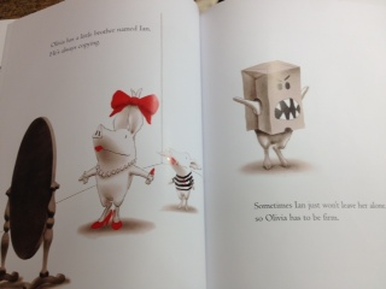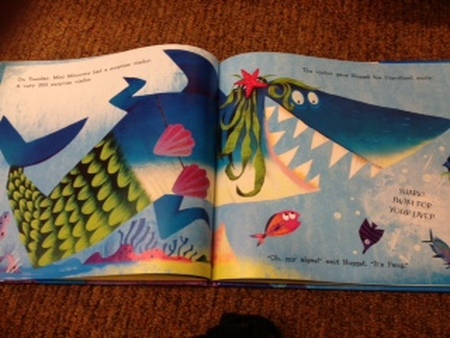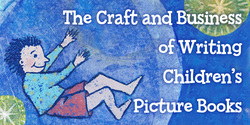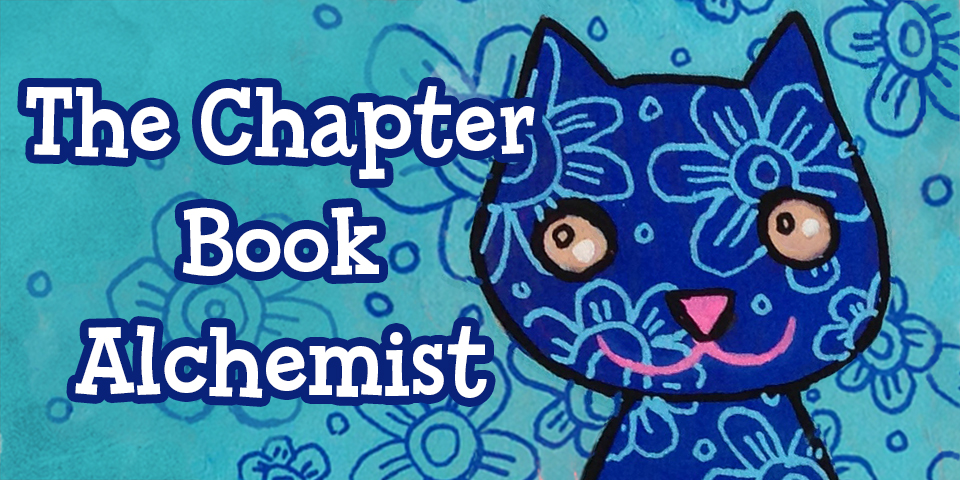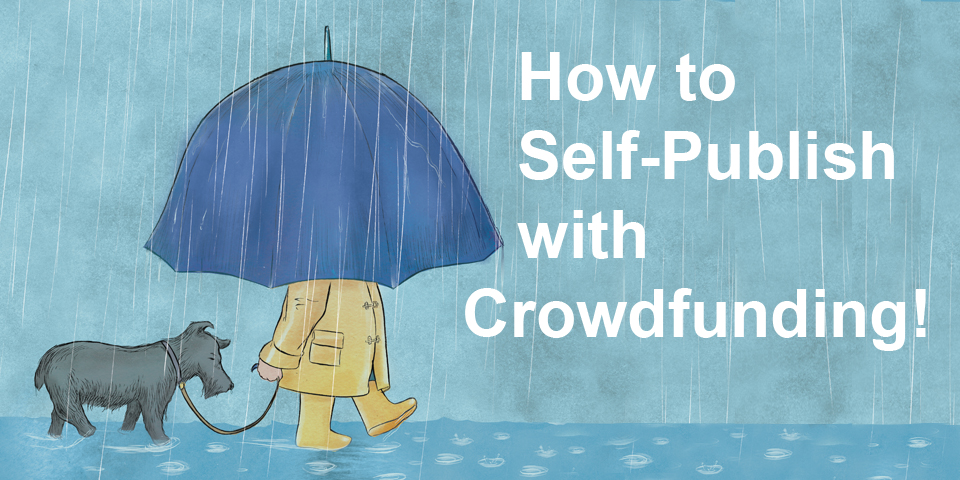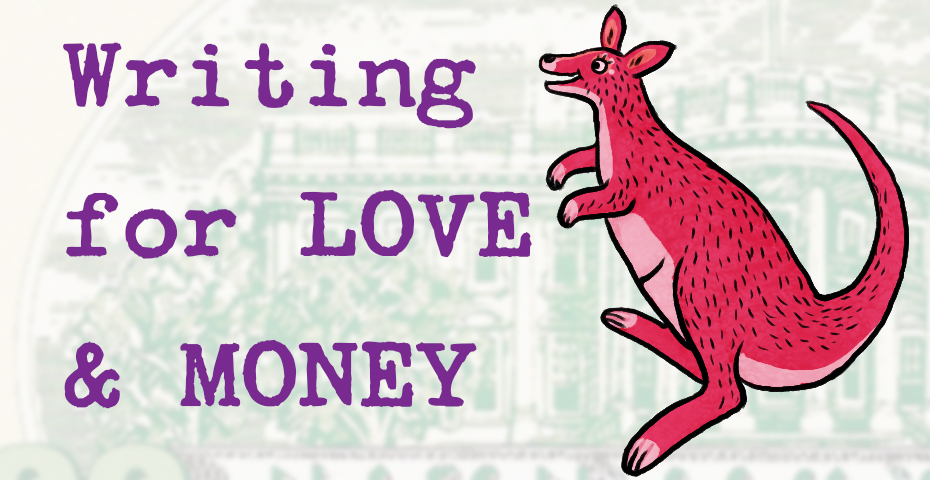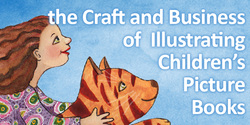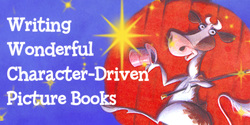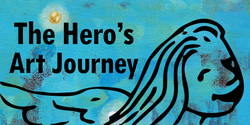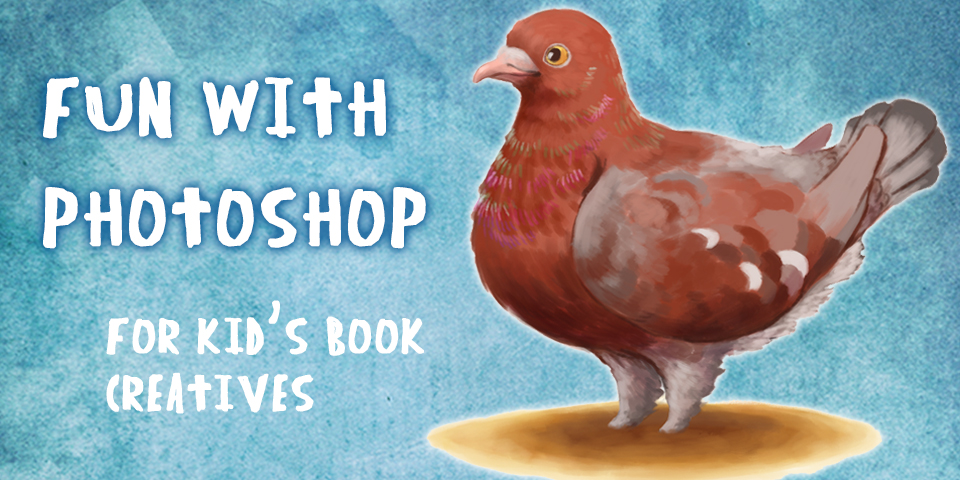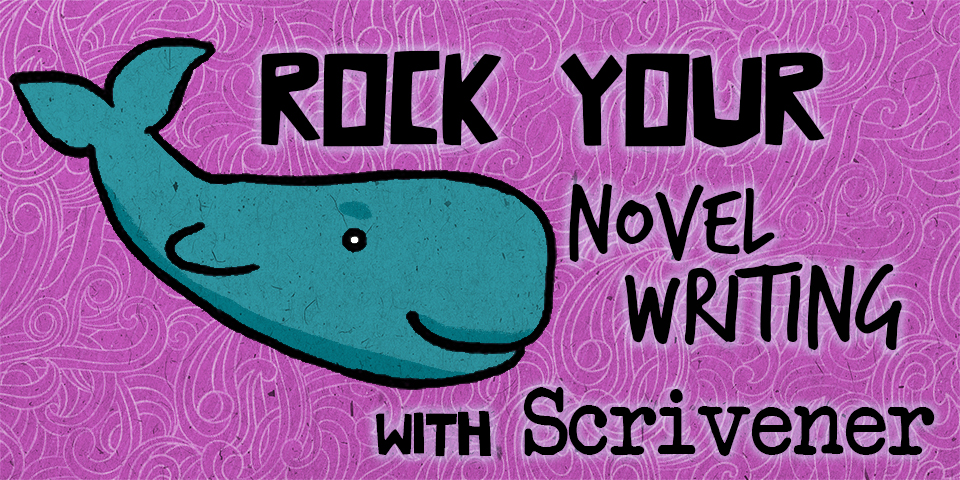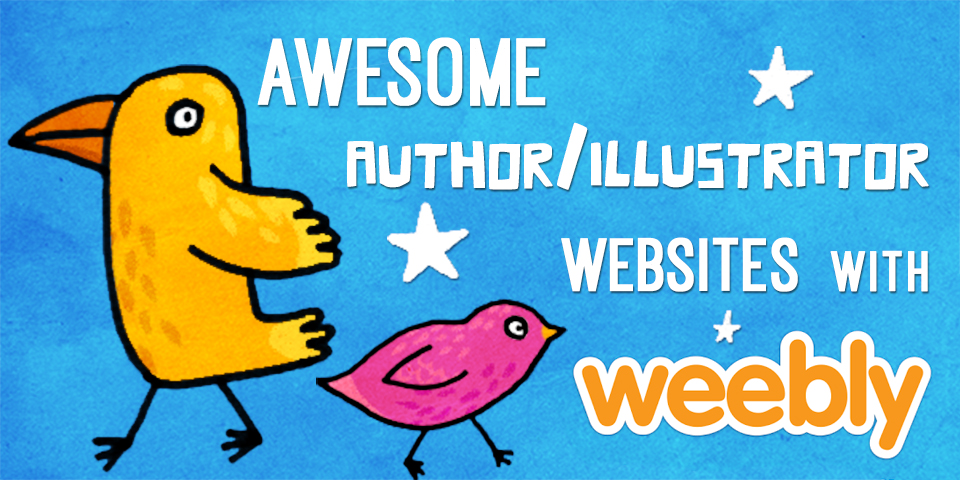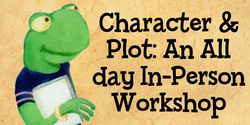|
I love funny picture books. I even write funny picture books. But study enough funny picture books and you will have the same discovery I did: often the words play “straight man” to the illustrations. At first this frustrated me. I mean, I love telling a good joke. I want to be funny. I want other people to think I am funny. But the truth is, in order to be a funny picture book writer, I have to be aware of how a picture book works. The words in a picture book MUST leave room for the pictures.In all actuality, the illustrator tells 50% or more of the story. In this way, picture books build visual literacy, as well as verbal. And remember, the picture book is meant to be read aloud to a child, therefore the child looks at the illustrations while the words are being read to them. By giving the illustrator room to be as layered and juicy as possible,children are allowed to be active “readers”. Let’s take a look at Olivia by Ian Falconer. 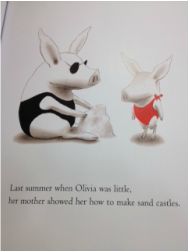 Falconer could have written, "Olivia's little brother Ian copies everything she does, even when she plays dress-up with Mom's makeup. Sometimes Ian won't leave Olivia alone so she dresses up like a monster to scare him." Wouldn't be the same, though, right? The marriage between what the words are saying and what is enhanced by the illustrations is what makes a successful picture book. The child looking at the illustrations is "in on the joke". Let's look at another illustration from Olivia. "Last summer when Olivia was little, her mother showed her how to make sand castles." Then after a brilliant page turn, we have this illustration. 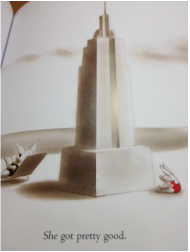 "She got pretty good." Hilarious, right? Think of a kid's reaction once that page is turned. An illustrator puts the discovery in the hands of the child. The picture speaks, the adult doesn't have to "give" the joke to the child. Picture books are empowering for the child. Falconer could have written, "She got so good she even made the Empire State Building." And yes, then there could be the same illustration. But the simple text with the illustrative layer is what makes this genius. Now, Ian Falconer is the author AND illustrator of Olivia, which sometimes leaves us AUTHOR ONLY picture book people wondering how we communicate the "funny" to an illustrator without dictating it. 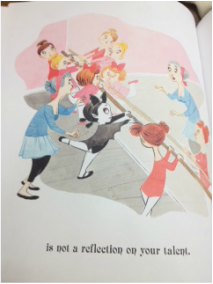 Let's take a look at Vampirina Ballerina written by Anne Marie Pace with illustrations by LeUyen Pham. This book is filled with a wonderful juxtaposition between words and illustrations. Pace's text is very basic, giving a "how to" type lesson on becoming a ballerina. However, Pham is able to use the double-meanings of the text to bring a level of vampire humor to the story. Here we have little Vampirina at the barre with the text, "is not a reflection on your talent." And of course, Pham picked up on the fact that vampires do not have a reflection and capitalizes on this fact in a comical illustration. Here picture books teach children to look for layers of meaning in words. They can also introduce young readers to irony--a sophisticated level of humor. Allow your illustrator the same amount of fun you had when writing your story. Above is an example from Nugget & Fang written by Tammi Sauer and illustrated by Michael Slack. "On Tuesday, Mini MInnows had a surprise visitor. A very BIG surprise visitor. The visitor gave Nugget his friendliest smile." Notice how Sauer let's her illustrator know that Fang is in disguse here, but does not state what kind of disguise, which gives Slack the freedom to bring out his own brand of humor. Hence, we have a shark in drag. I mean, who DOESN'T think a shark in drag is hilarious?! 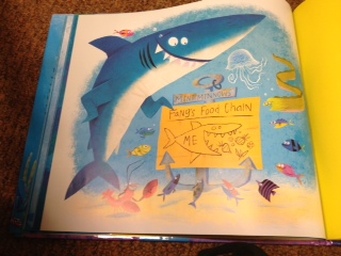 Slack continues the fun with a "button" (final page at the conclusion of the story) in which we see Fang explaining his new diet to the other fish. I would tend to believe this is all Slack and not something that Sauer had in her manuscript. But in allowing room for Slack to co-own the story, his brilliance shines through as much as her's. So, as frustrating as it might seem to leave so much room to the illustrator, it truly benefits the story...and the experience for the child. For that very reason, I will gladly take the "straight man" role once in awhile. In previous chapters Marcie Colleen has been a teacher and theatre educator, but now she splits her days between chasing the Picture Book Writer dream and chasing toddlers on the playground as a nanny. Both are equally glamorous! Her blog, The Write Routine and her Teacher’s Guides, can be found at www.thisismarciecolleen.com. You can also follow her on Twitter. Additionally, Marcie is the Education Consultant for Picture Book Month. She contributes the 4th Friday of the month, as a Blogette, right here, posting on humor in picture books. She lives with her fiancé and their mischievous sock monkey in Brooklyn, NYC.
9 Comments
11/21/2013 11:21:06 pm
Thanks, Marcie! We writers are wordsmiths, and it's so hard not to describe and say too much. It's hard to write captions when we want to tell the whole story with our words. You pointed out brilliantly why we need to rein ourselves in. Great post!
Reply
11/21/2013 11:22:42 pm
I love this topic. I've read several author/illustrator books recently and have wondered why some words weren't left out since the illustration tells that part of the story.
Reply
11/22/2013 11:47:48 am
Excellent post, Marcie! I am bookmarking this for reference. Love the examples you give. This topic has been my biggest struggle and i've been searching everywhere for books and/or seminars addressing text and illustrations- what to leave out other than just descriptions. You explained this very well!
Reply
Kim Pfennigwerth
11/23/2013 11:41:22 am
This is a great post, Marcie! Thanks!!
Reply
sue
11/25/2013 04:37:50 am
Loved this post, Marcie!
Reply
Charlotte Dixon
11/25/2013 09:54:45 am
Thank you for this post, Marcie, on how the writer and illustrator can work together to show humor. It's a tough balance and your examples speak volumes.
Reply
11/25/2013 05:15:59 pm
Hej Marcie! Thanks for this excellent explanation. Best from Stockholm.
Reply
Leave a Reply. |
Meet the Friday Blogonauts
First Fridays will feature Bryan Patrick Avery, published writer , man of mystery, and professional magician among other things.
Second Fridays will feature awesome multi-award winning author Marsha Diane Arnold who will be writing about character-driven and/or nature-based books and/or anything she likes :) Third Fridays will feature independent Aladdin/Simon & Shuster editor Emma Sector who has helped bring many books into the world. Fourth Fridays will feature the great Christine Taylor-Butler who has published over 70 award-winning fiction and non-fiction and nonfiction books including the acclaimed new middle grade series - The Lost Tribes. Fifth Fridays will feature the fabulous Carl Angel award-winning multi-published Illustrator and graphic designer. Join our Tribe
and receive 7 Steps to Creative Happiness, access to free webinars, and lots more!
Your email addresses are always safe and respected with us. Follow our Blog!
Archives
January 2019
Categories
All
|
|
Discover
|
About Us
|
Join Us
Join our Community and receive a fabulous free gift, KidLit tips, newsletters, scholarship info, contests, and more!
Join our KidLit Mentorship |
Social Media
Interact with our FaceBook Group or follow us on:
|
© 2010-2024 All content on this website is copyrighted. Sorry, all courses are non-refundable.
